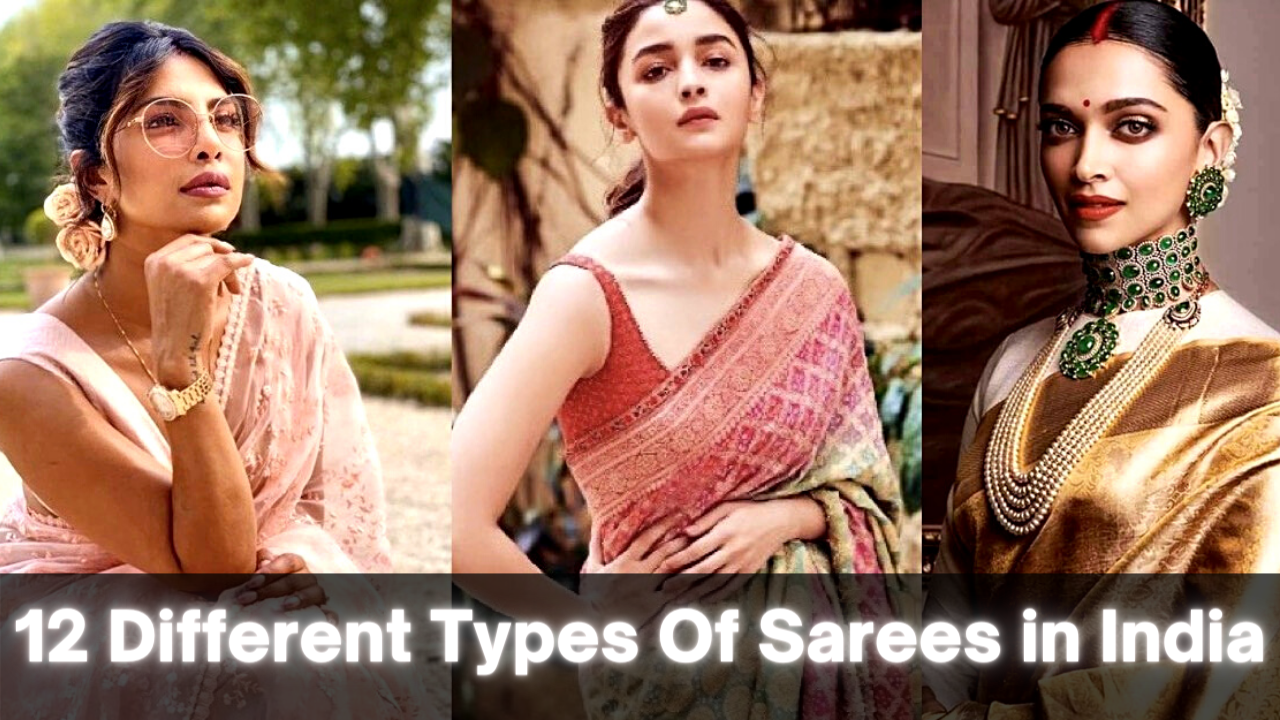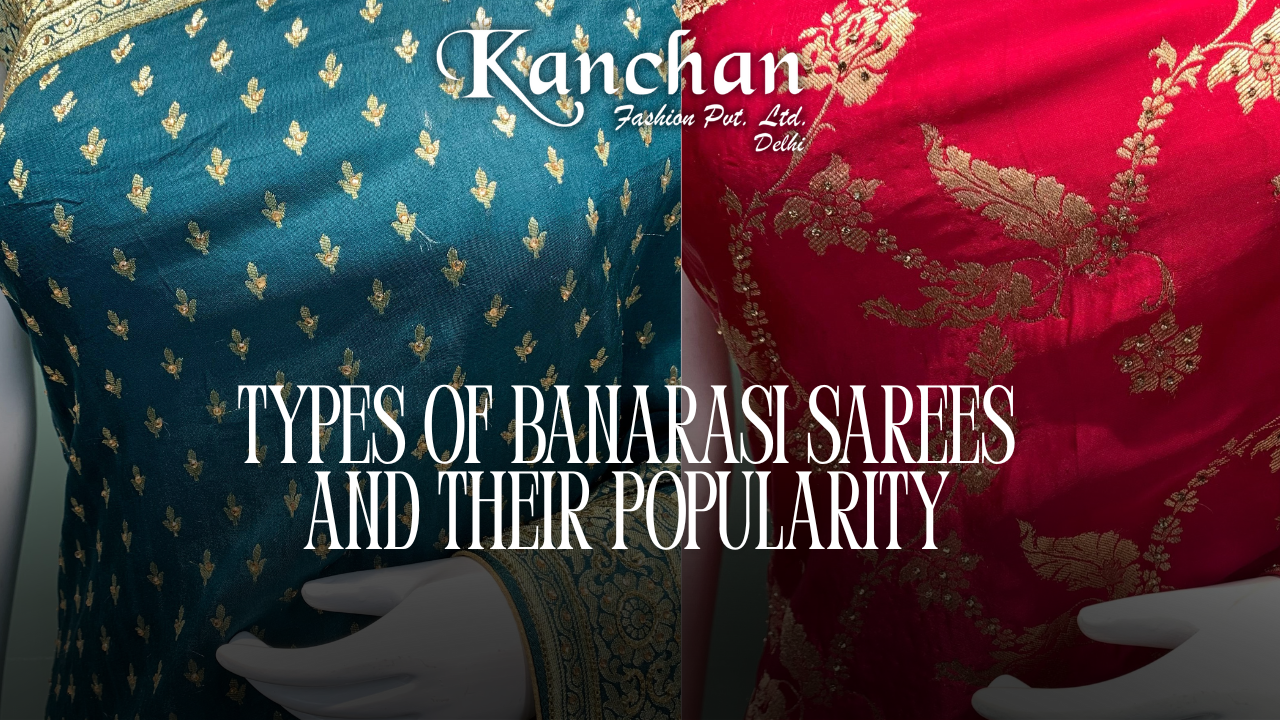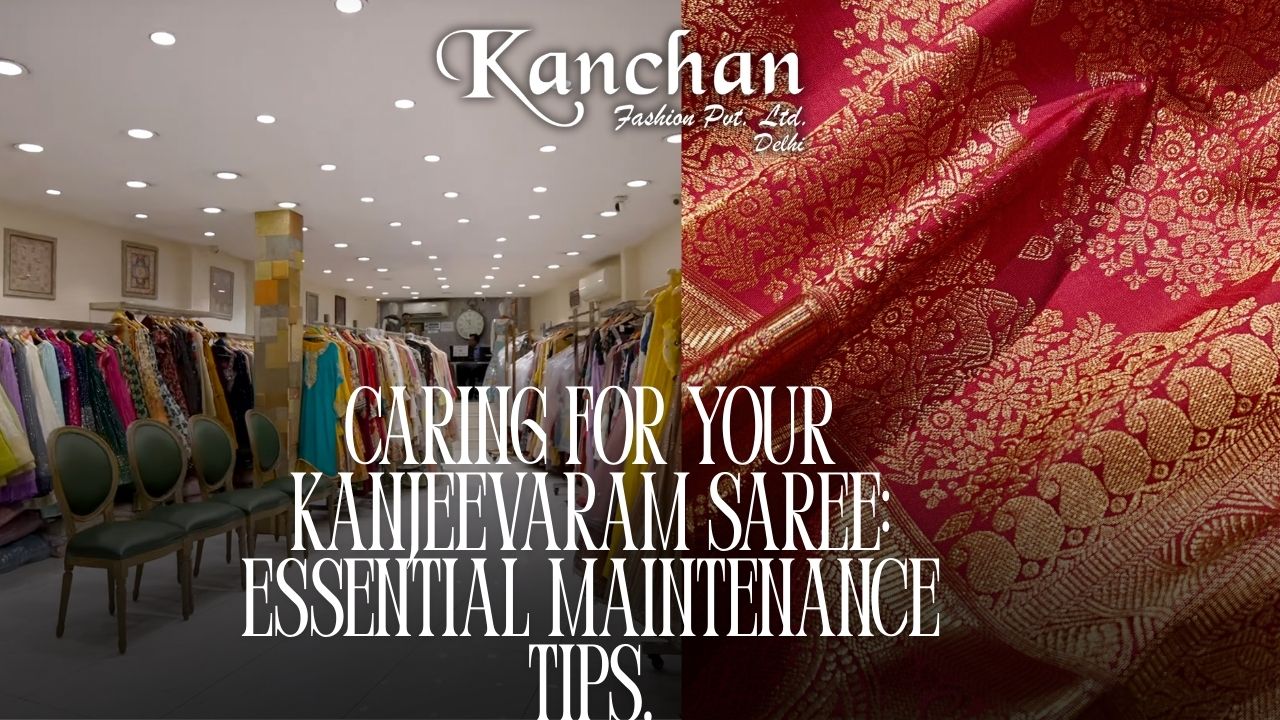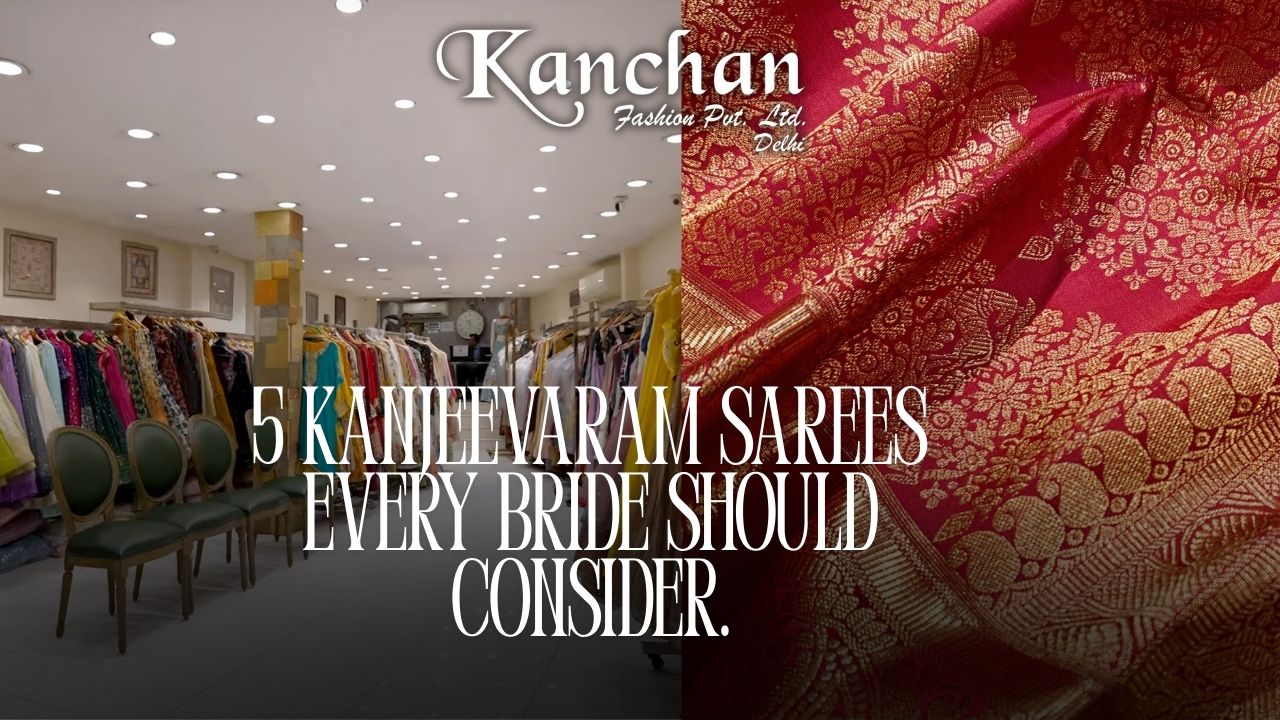12 Different Types of Saree Designs for Wedding In India

Our nation's distinctive cultures and customs are reflected in sarees. The unparalleled beauty of a saree is the reason why we all like this unique garment.
Varieties of Sarees, an enduring item of cultural dress, are found across the country. Depending on the numerous varieties of sarees in India, the usual nine yards of drape may be fashioned and styled differently.
Our unique culture has provided us with several languages, delicacies, and even Saree varieties! We will take you on a Saree-by-Saree tour of the nation!
Discover the numerous varieties of Sarees and saree names that will have you searching through your mother's wardrobe and experimenting with various designs.
Learn how to wear a saree with us as we discover the importance of various Saree varieties and the names of sarees in India. The next wedding you attend will be filled with flair as you showcase your newfound knowledge of our ethnic garments.
Different Types of Sarees in India
1. Kanjeevaram Saree from Tamil Nadu

Kanjeevaram Saree exudes opulence due to its vibrant hues, regal borders, and luxurious silk.
Kanjeevaram are traditional wedding sarees from Tamil Nadu that have been embraced nationwide for special occasions. The sarees, woven from pure mulberry silk thread, have an intrinsic beauty and grace. The sarees have a characteristic gold hue to enhance their appearance.
Kanjeevaram also creates religious designs influenced by temple architecture and mythology. The pallu of a Kanjeevaram saree is often a contrasting hue, enhancing the drape's character.
Numerous Bollywood actresses in sarees have worn the coveted Kanjeevaram on the red carpet. Kanjeevaram sarees are often paired with gold jewellery to enhance their royal appearance.
2. The Maharashtra Nauvari Saree

The Nauvari is a traditional Indian saree that originates from the west coast. The basis of this saree's name is the length of the garment, which is nine yards.
The "kashta" method, in which the saree's border is tucked towards the rear, is a particularly distinctive way to drape a Nauvari.
The Nauvari Saree is a sign of bravery since the draping method originated with Maratha women warriors who wore the saree in a dhoti form so they could ride horses and battle with ease.
Over time, Nauvari sarees are fashioned for events like nuptials. Brides are incredibly gorgeous when dressed in a vivid Nauvari saree and a Shela shawl draped over their arms. Nauvari, one of the several varieties of sarees in India, is easily identifiable due to its distinctive design.
Typically, the saree is embellished with traditional gold jewellery and a nath, which adds to its allure. This saree is often worn with a top bun adorned with gajra or flowers.
3. Bandhani Saree from Gujarat

Gujarat is the origin of the well-known tie-dye Bandhani patterned saree.
Bandhani sarees come in a variety of hues and designs, but the age-old idea remains the same: it gives good fortune and a prosperous future to the bride.
The production of a Bandhani Saree is a complicated procedure involving hand-applied dyes. Bandhan is a form of saree that evokes big imagery of Gujarati and Rajasthani traditions.
Due to their very fragile nature, Bandhani sarees are handled with great care and conserved throughout time.
Bandhani Sarees may be accessorised with oxidised silver jewellery to enhance the aesthetic. Add a potli bag for more glitz.
4. Tant Silk Sari from West Bengal

The Tant saree is easily distinguished from all other varieties of Indian sarees. This crimson and white saree from Bengal is the embodiment of elegance.
The saree is a wardrobe essential for all Bengali ladies. Tant is made from a highly breathable cloth, allowing it to be worn in humid conditions.
This classic Indian saree had intricate zari embroidery on the pallu, while hand-printed Tant sarees are popular nowadays.
The Bengali saree is a popular choice for Durga Pujo, Diwali, and other celebrations.
For the ideal festive style, you may wear a Tant Saree with a high bun or loose curls. Enhance your ensemble with weighty accessories.
5. Banarsi Saree originating from Varanasi

The Banarsi saree is one of the most popular of the several styles of sarees from different Indian states. These silk sarees from Varanasi are known for their designs and themes.
Originally, the Banarsi saree was created only for royalty using gold and silver threads. Many varieties of the Banarsi constitute some of the finest sarees in India today, yet its grace has not been lost.
Due to the skill with which it is woven, several Bollywood stars have donned Banarasi sarees on special occasions.
Style tip: Kundan jewellery looks ethereal with these sarees, and the hairdo for these sarees is a high bun with a few flowers tucked into it.
6. Chikankari Saree from Lucknow

From the Nawabi city of Lucknow comes the exquisitely embroidered Chikankari cloth.
The straightforward statement would be that Chikankari sarees are beautiful, but the complex patterns are so much more. These sarees, which have intricate embroidery on calming hues, may be worn on any day, time, or event. Elegant and trustworthy Chikankari will capture all eyes.
The Chikankari art is imbued with themes evocative of Persian handcraft.
A traditional design item, Chikankari sarees may be accessorised with straight hair and simple jhumkas.
7. Bomkai Saree from the Indian state of Odisha

From Odisha comes a new form of saree — in India, these sarees are known as Bomkai. The appearance of this saree is contemporary, yet the patterns are strongly ingrained in the tradition of the state.
The Bomkai Saree may be woven in cotton, which is worn on a daily basis, but the silk Bomkai Sarees are luxurious and appropriate for special occasions. The Saree is influenced by the hidden history, as seen by its spectacular mythical designs.
For a different texture, the Bomkai saree employs a number of contrasting hues, such as yellows and greens. The saree is the peak of elegance since it was created using a profitable method.
Wear it to the office or to informal occasions. Add some silver or gold jhumkas to complete the ensemble.
8. Chanderi Saree from the Indian state of Madhya Pradesh

This Madhya Pradesh saree's flawless lustre is beautiful.
Silk and zari are woven with cotton to create a fabric that is as light as air. The saree's rich texture makes it suitable for holidays and celebrations.
There are several ways to drape a saree, but the shine of Chanderi never fades in any of them. Its handloom weave has a delectable texture, and this drape will steal the show at any bridal event.
Chanderi Sarees may be accessorised with slicked-back hair and Kundan jewellery.
9. Kasavu Saree from Kerala

The Kasavu, a brilliant and exquisite traditional Indian saree, hails from the southernmost state of Kerala.
Kasavu initially consisted of a dhoti, a blouse, and a stole that was wrapped over it, but it has evolved into the most fashionable saree. The white saree with golden borders that are occasionally woven with actual gold is breathtaking.
The saree's simplistic style gives it a highly fashionable appearance, and it is often worn during the Onam festival in Kerala. It is considered as one of the most beautiful ethnic wear for women in India.
Add gold jewellery and a gajra to your attire while attending a wedding.
10. Assam's Muga Saree

Unique and exquisite, Muga silk sarees are produced only in Assam.
The many varieties of saree available on the market are highly flexible because to its silky shine and durability. With its natural golden hue, the saree is a sight to see. This desired saree is the outfit of choice for weddings and other special events. Muga is one of the most expensive silks, and its lustre enhances with each wash, making it ageless.
The sarees are adorned further with the zari embroidery. The traditional golden Muga saree will make you the centre of attention at the next festive event.
Add chunky accessories to your ensemble to spruce it up.
11. Phulkari Saree From Punjab

Phulkari is the Punjabi traditional needlework that produces lovely designs. There are floral patterns, themes, and even geometric patterns on Phulkari sarees.
The intricate details of a Phulkari saree are created using darn stitches on the rough side of the fabric. Phulkari patterns are highly beautiful due to the usage of vibrantly coloured fabric.
Based on their manufacturing, many varieties of Sarees belong within the larger Phulkari spectrum.
The embroidered yards of fabric appear lovely in daylight and may be accessorised with silver or gold jewellery.
12. Telangana's Pochampally Saree

Telangana's Pochampally Sarees are characterised by intricate designs and geometric patterns.
The distinctive "Chowra" designs on these sarees are created using the Ikat dyeing technique to provide the illusion of waves of scattered squares and diamonds. These sarees, woven with either cotton or silk, are very creative.
Pochampally sarees have never ceased to remain fashionable, always advancing with the times. With its rainbow patterns and intriguing themes, this saree is certain to be a show-stopper at any occasion.
Tip: Accessorize with gold jewellery and twist your hair into a neat bun to elevate your outfit.
Looking at all these patterns and styles, we've determined that the saree names in India may vary, but their feel is intrinsically tied to our culture.
Our connection with sarees is unending, from Bollywood celebrities in chiffon sarees to the nosy neighbour aunty delivering a "rishta" to your door. To preserve our tradition of draping this nine-yard fabric, we must be familiar with India's many saree varieties.
Read More How to Wear a Saree: A Simple Guide.








